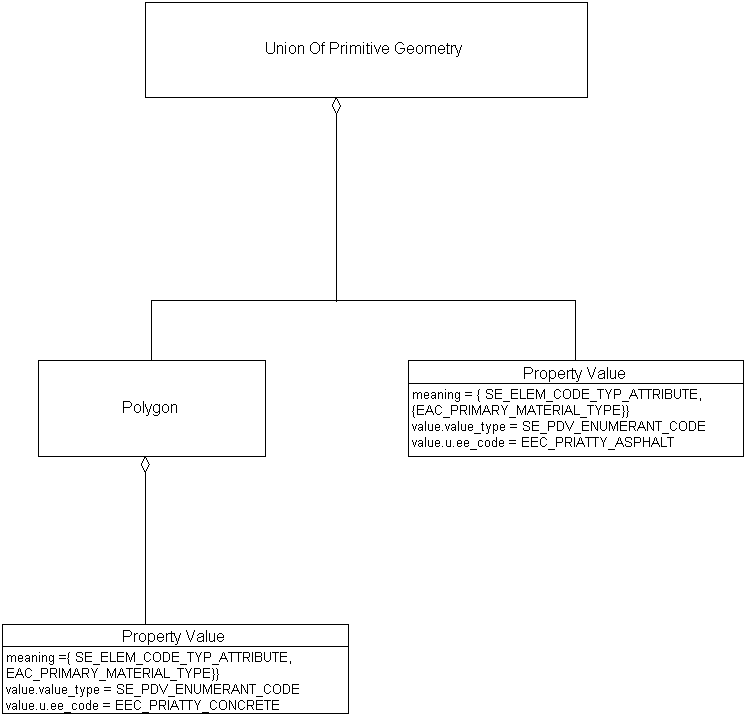Consider a <Union Of Primitive Geometry> instance that is a collection of <Polygon> instances representing a parking lot that is primarily surfaced with asphalt but has a few patches of concrete.
The <Union Of Primitive Geometry> instance has a <Property Value> component with meaning = { SE_PROP_CODE_TYP_ATTRIBUTE, {{ EAC_PRIMARY_MATERIAL_TYPE }} and its value is EEC_PRIATTY_ASPHALT. This is inherited by all the <Polygon> components of the union, so that if a <Polygon> instance represents a section of asphalt, it need not specify any further information.
Consider a <Polygon> in the union which represents one of the areas of concrete. This <Polygon> has a <Property Value> component which also has meaning = { SE_PROP_CODE_TYP_ATTRIBUTE, {{ EAC_PRIMARY_MATERIAL_TYPE }} but with value EEC_PRIATTY_CONCRETE. For that <Polygon>, the EEC_PRIATTY_CONCRETE value overrides the inherited EEC_PRIATTY_ASPHALT value.
